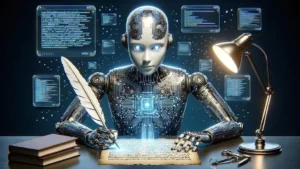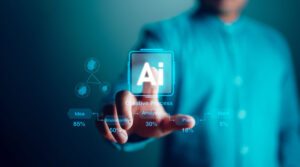Robotics has had a huge impact in many areas by making huge strides in safety, efficiency and productivity. The use of robotics is changing the way work is done and creating value in many sectors, from manufacturing and logistics to healthcare and agriculture. The result of this change has been the use of more advanced robotic systems, improving operational skills and creating new ways to innovate.
1. Application of Robots in Production:
In manufacturing, robotics is changing the way things are made by automating precise, repetitive tasks. Robots are now frequently used for tasks such as painting, welding, assembling and inspecting the quality of the work. The main benefit of using robots in production is that it speeds up and improves production quality. Robots don’t get tired like humans, so they can work non-stop, meaning they can get more done and need less time to rest. Additionally, robots can work in hazardous or toxic environments, making the workplace safer and reducing the risk of injury. The application of robotics in manufacturing helps produce high-quality products with fewer defects, achieving overall operational excellence.
2. Robots Work in Warehouses:
Since the popularity of robots, it has also brought about enormous changes in the logistics sector. Automated robots are increasingly being used in warehouses and distribution centers to sort, package and transport goods. These robots can move goods quickly and easily, making full use of storage space and speeding up the order fulfillment process. Autonomous mobile robots (AMRs) are ideal for getting around buildings, moving objects with precision and reducing the need for humans to do manual work. Logistics robots not only make business operations more efficient, but also order processing more accurate. This means faster delivery and satisfied customers.
3. Using Robots in Healthcare:
Robotics improves medicine and patient care. Robots used in surgery, such as those used in minimally invasive treatments, make operations more accurate and easier to visualize. These robots feature improved imaging and robotic arms, allowing surgeons to perform delicate surgeries with fewer incisions. This means that patients recover faster and have a lower chance of complications. Robotic exoskeletons are also used to help patients regain strength and movement during recovery. These smart technology gadgets support physiotherapy by providing specific assistance and making recovery programs more effective. Healthcare robotics also helps improve testing tools, making it easier, more accurate and faster to find people’s problems.
4. Using Robots in Agriculture:
Robotics has helped agriculture by making it possible to plant, harvest and monitor crops using automated systems. Robotic systems are used to perform highly accurate and fast tasks such as sowing, fertilizing and harvesting crops. These robots have sensors and advanced systems that allow them to move through fields, find crops ready to pick, and do other things that need to be done without human assistance. Using robots in agriculture can help increase yields, reduce labor prices and improve the overall quality of crops. Robotic systems can also monitor crop health and the environment, providing farmers with useful information to help them make better decisions and use resources more efficiently.
5. Problems and Prospects:
Although robots have many advantages, there are also some problems that need to be solved. Building a robotics system can be expensive initially, which can be a problem for small businesses. Some people are also concerned about losing their jobs if robots begin to perform previously human-only tasks. But the use of robotics also opens up new work opportunities in areas such as robot maintenance, programming and assembling complete systems.
Conclusion:
Robotics is transforming many fields, making them safer, more efficient and more productive. The use of robotics in manufacturing, logistics, healthcare and horticulture is bringing enormous progress and changing the way work is done in these areas. Although there are still some issues to be resolved, the future of robotics looks bright, with more progress and new ideas. As technology continues to develop, robots will become an important part of shaping the future of business and driving growth in many areas.
FAQs:
1. What benefits does robotics have for the transportation sector?
Robotics has many applications in logistics, such as making it easier to track goods, making optimal use of storage space, and speeding up order fulfillment. Autonomous mobile robots (AMRs) and other types of automated robots can move items quickly and accurately in warehouses. This automation reduces manual work, speeds up processing and reduces the chance of errors. This means faster delivery and satisfied customers.
2. What role do robots play in healthcare?
In healthcare, robotics includes surgical robots that make minimally invasive treatments more accurate and speed recovery while reducing the risk of complications. Robotic exoskeletons help people regain strength and movement during recovery. Additionally, robotics can help improve diagnostic tools, making medical exams more accurate and faster.
3. What role do robots play in agriculture?
Robots are used in agriculture to do many things, such as sowing seeds, fertilizing and harvesting them. They have sensors and algorithms that allow them to move through the fields, search for crops ready to pick, and perform other tasks themselves. Robotics can help increase yields, reduce labor costs and improve crop quality. It also collects useful data that helps people make better decisions and manage resources better.
4. What problems will you encounter when robots are used in business?
One problem with robots in industry is that the initial installation costs can be high, which can be a deterrent for small businesses. People also worry about losing their jobs if robots take over jobs that humans used to do. To solve these problems, we need to spend money to learn new skills and adapt to changes in the workforce.
5. What is the future of commercial robots?
The future of industrial robotics looks bright, as new technologies can make robots more useful. New technologies such as artificial intelligence and machine learning will drive progress, allowing robots to perform more complex tasks and work better with humans. The future of robotics could provide new options and possibilities for many different industries.



